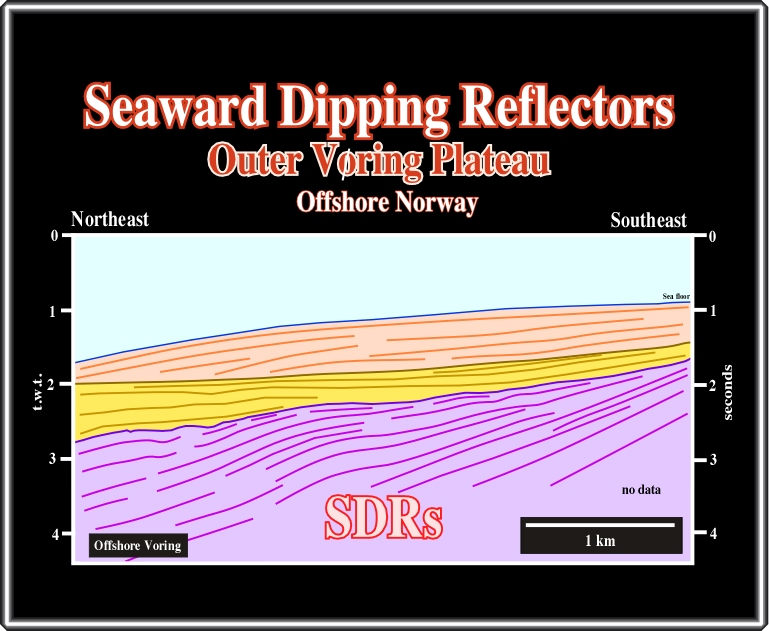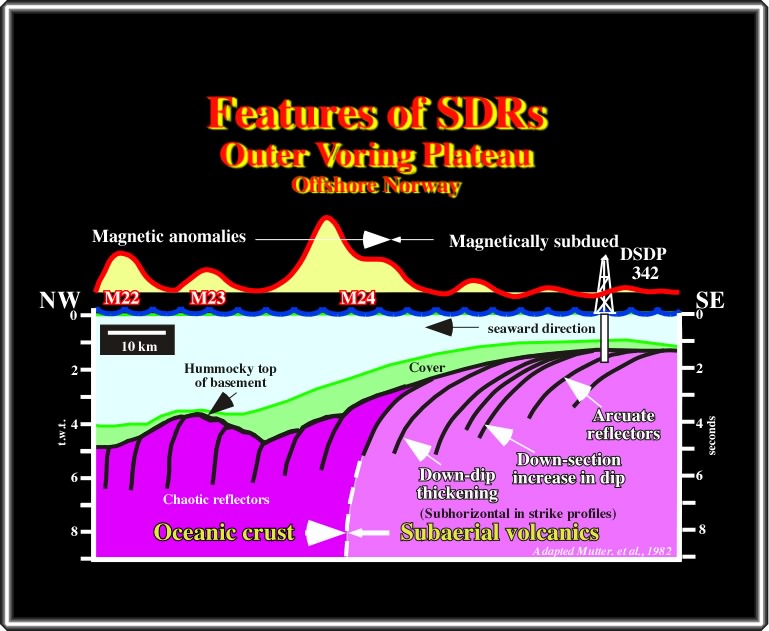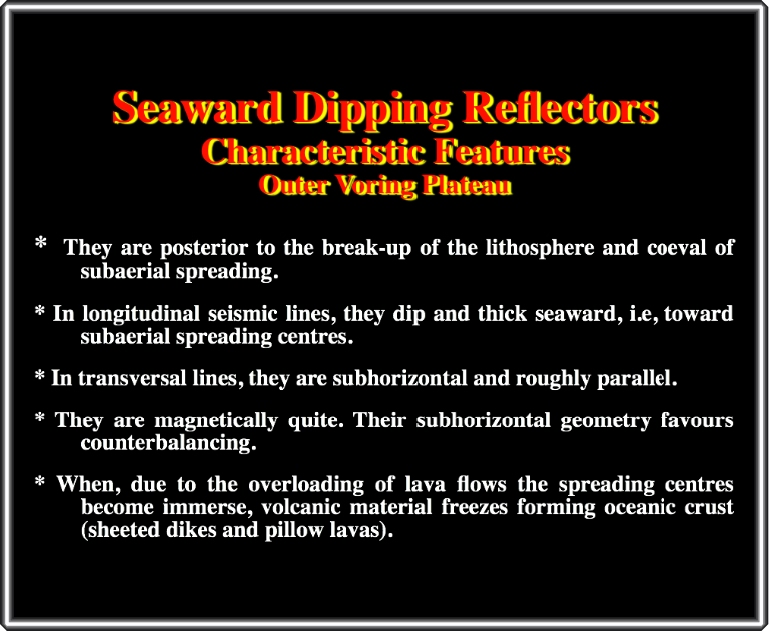

Seismic and subsurface data falsify the non-volcanic divergent margin model suggested by Burchfiel and other geologists. Actually, the majority of the geological implications and predictions suggested by the conventional hypotheses have not been observed, particularly on seismic data. Indeed, when long regional marine seismic lines were shot on offshore Norway and South Atlantic, geologists recognized a consistent thick seismic interval formed by more or less continuous reflectors dipping and thickening seaward (Mutter et al., 1982).

As the lithology of such a typical deep-water seismic reflectors was unknown, geologists labelled them SDRs, that is to say, seaward dipping reflectors and they recommended that a DSDP should be drilled to recognize their lithology. Indeed, geologists put forward two different lithologies. For some, they should correspond to sedimentary interfaces of rift-valley basin sediments. For others, they should be induced by some kind of volcanic material emplaced during or after the breakup of the lithosphere. In other words, for some geologists, the SDRs could correspond, at least partially, to potential source rocks able of generate huge amount of hydrocarbons, while for others, their total organic matter was meaningfulness, even nil. At the petroleum exploration standpoint, the schism was evident.

The DSDP 342 recognized a subaerial volcanic facies for SDRs, that is to say, they were induced by lava flowing from a subaerial spreading and thinning in direction of the continent. In addition, as volcanic material cannot flow under water, geologists hypothesize that as soon as the spreading centres become immerse, it will be frozen forming the oceanic crust (sheeted dykes with pillow lava). Subsequently, two different geometries were associated with volcanic crust:
(i) a roughly subhorizontally, characterizing the subaerial crust (SDRs) and
(ii) a vertical geometry, characterizing the oceanic crust.
So, at the magnetic stand point, above the SDRs, the magnetic anomalies are subdued, while above oceanic crust they are well visible, as depicted on previous plate. On the other hand, seismically, the oceanic crust creates chaotic reflectors, while the subaerial crust creates more or less continuous reflectors, which become later arcuate due to the loading of the younger lava flows.
The main characteristics of the SDRs are described below:

to continue press
next
Send E-mail to carloscramez@gmail.com or to carlos.cramez@bluewin.ch with questions or comments about this conference. Copyright © 2006 CCramez Last modification:August, 2014